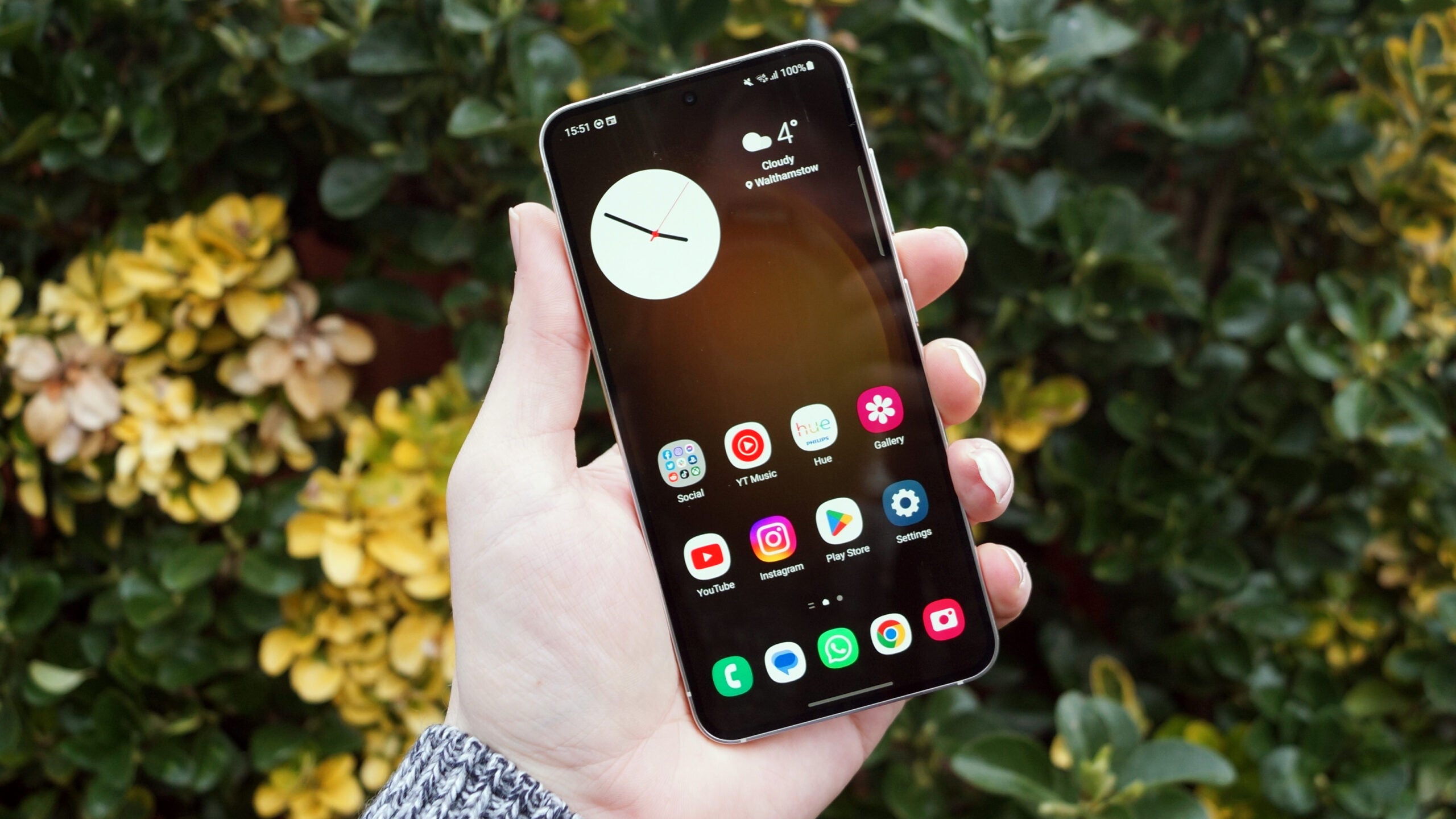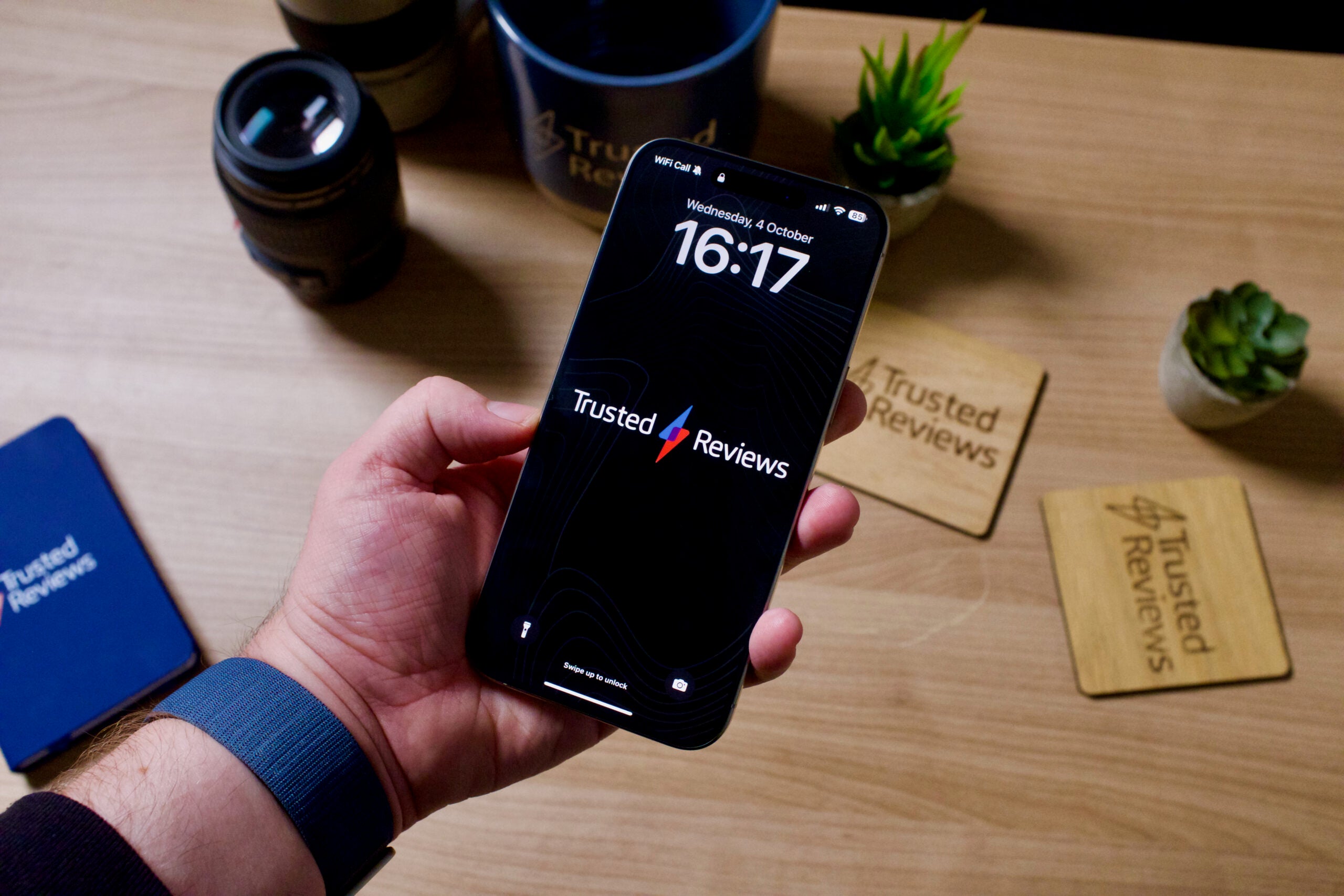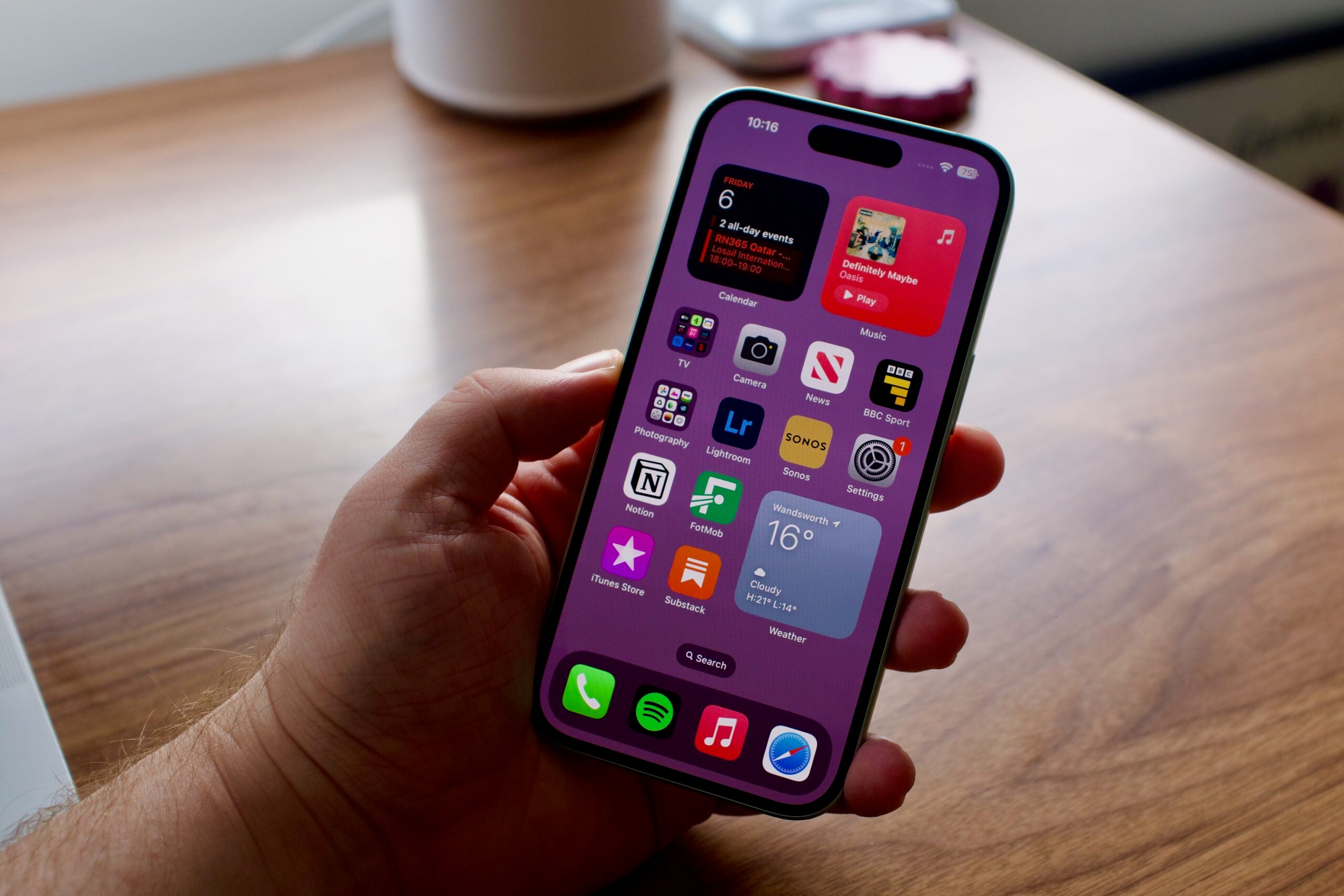Asus Zenfone 8 Review
A small Android flagship that delivers
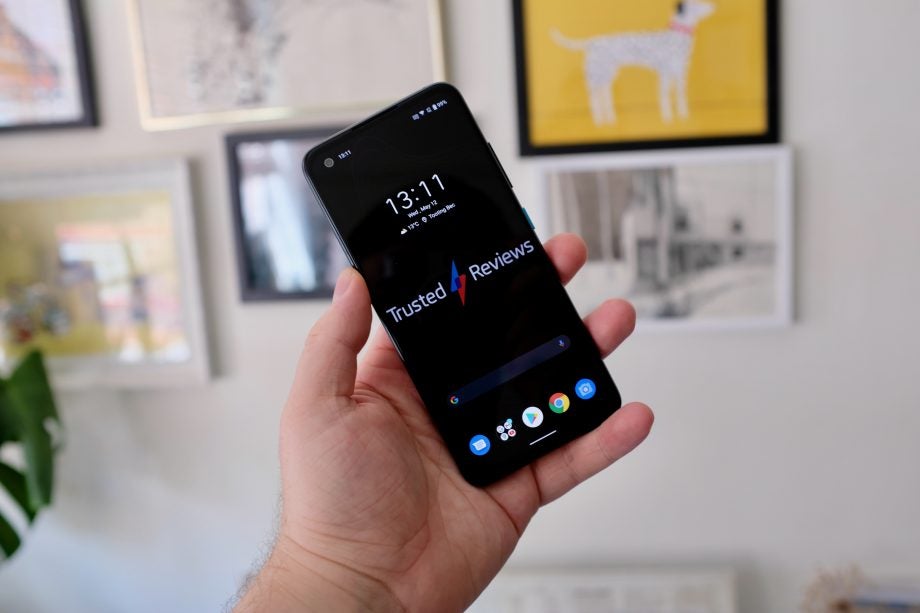

Verdict
By not following the blueprint of pretty much every other Android phone, Asus has found a niche for the Zenfone 8. If you’re after an iPhone 12-sized Android phone with top-tier specs then this device is an excellent option.
Pros
- Great size for those who find Android phones big
- Impressive speed
- Lovely screen
- Impressive value
Cons
- Can get hot when gaming
- No telephoto camera
- No wireless charging
Availability
- UKRRP: £599
- EuropeRRP: €599
Key Features
- High peformance:Snapdragon 888, up to 16GB RAM and 5G
- Display:5.9-inch OLED display is smaller than many rivals
- Battery:4000mAh cell with 30w charging
Introduction
The Asus Zenfone 8 could have ended up being just another Android phone in the same ilk as the Samsung Galaxy S21 Plus, OnePlus 9 and so on.
Instead, Asus has made a clever decision to try to help this stand out among the other best Android phones around. Unlike its competition, the Asus ZenFone 8 is small – as in iPhone 12-level tiny.
Design and Screen
- The 5.9-inch screen is one of the smaller options
- OLED panel is of high quality
- Similar size device to the iPhone 12
Having a device with a sub-6-inch display is rare in the Android space, and handsets that have been released recently (Pixel 4a, Pixel 5) can’t really be classed as full flagship devices as they use more modest internal parts.
The Zenfone 8 isn’t being marketed as a ‘Mini’ or ‘Lite’ version of a larger device – this is the true Zenfone flagship for the year. It’s exceptionally pocketable, seriously light at 169g and is still feature-rich.
This isn’t as compact a device as the iPhone 12 Mini; it’s just slightly smaller than the iPhone 12. This is a good move on Asus’ part, since going as small as Apple’s Mini phone would have likely put more people off than those who would have been enticed by the idea. The size here feels like a decent compromise, and the device should certainly be of interest to anyone who feels Android phones are generally too big.
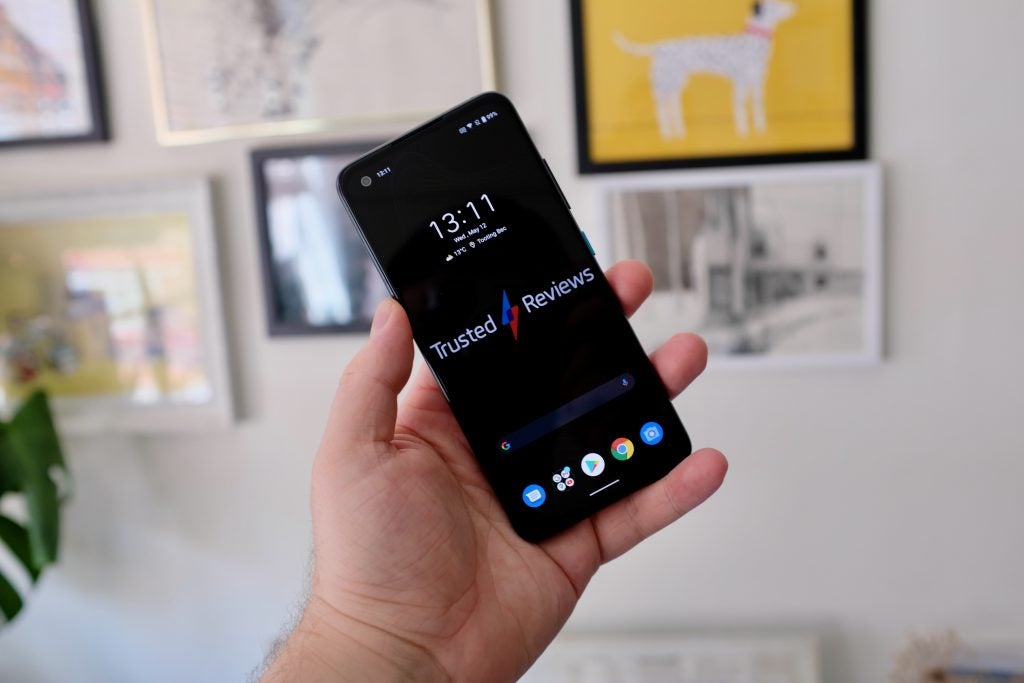
Size aside, the Zenfone 8 feels great. The metal back is heavily curved to nestle comfortably in your palm, and while it isn’t the thinnest device, there is room for a 3.5mm headphone jack on the top. There’s a USB-C port along the bottom edge, and there’s a pop of colour from a blue power button. You even get a notification/charging LED next to the USB-C port and an IP68 rating.
It’s a simple design, but it looks smart and subtle.
The front is home to a 5.9-inch flat display. It’s smaller than most, although I’ve found it more than adequate for gaming and watching videos. It’s also the ideal size for navigating with one hand, something that’s made even better by the iOS-like one-handed mode that shunts the whole interface down.
Asus might have opted for a smaller screen, but it hasn’t skimped on the tech powering the panel. The 1080p Samsung OLED E4 panel offers wide HDR support, Gorilla Glass Victus, a reported 1100 nits of brightness, an in-display fingerprint sensor and 120Hz refresh rate for smooth scrolling and responsive gaming.
These are all top of the line specs on a par, if not better, than most of the other flagships I’ve tested this year.
HDR content from Netflix really shows off the quality of the screen, with that added brightness giving an extra pop to explosions and the like. I can’t see many buying a smaller phone for video binges, but at least the quality is there if you do want to do that.
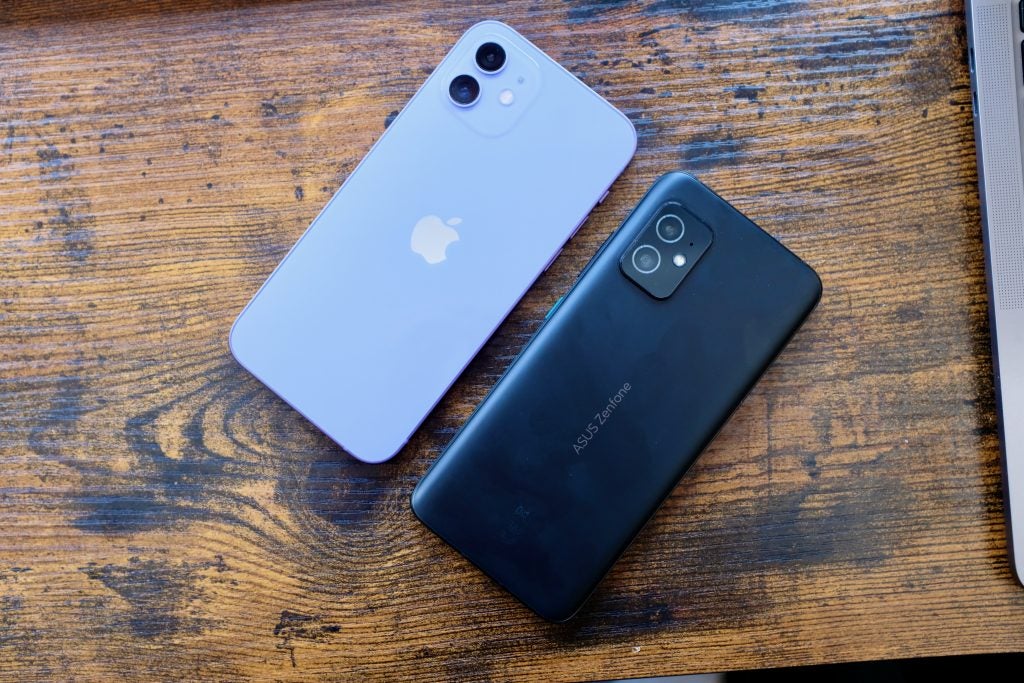
While the display isn’t adaptive in the same way as the panel that features on the OnePlus 9 Pro, you can switch between 60Hz, 90Hz or 120Hz, or have the system automatically switch it for you.
I left the auto option on for a while; however, the screen never seemed to switch all the way up to 120Hz, instead mostly sticking at 90Hz. I’m a sucker for that smooth 120Hz goodness, so I forced it to stick to that all the time out of habit. If you want to push the battery life longer, keep the auto mode on or drop it down to 60Hz.
This is an excellent screen with a seriously wide range of customisation options for tweaking colours and gamuts if you’re into that kind of thing.
Camera
- Two cameras on the back
- Zoom is purely digital
- Capable of shooting 8K video
The one area where sacrifices have been made to keep the size of the unit down is the camera set-up. There are only two sensors on the back, with a zoom lens scrapped due to lack of space.
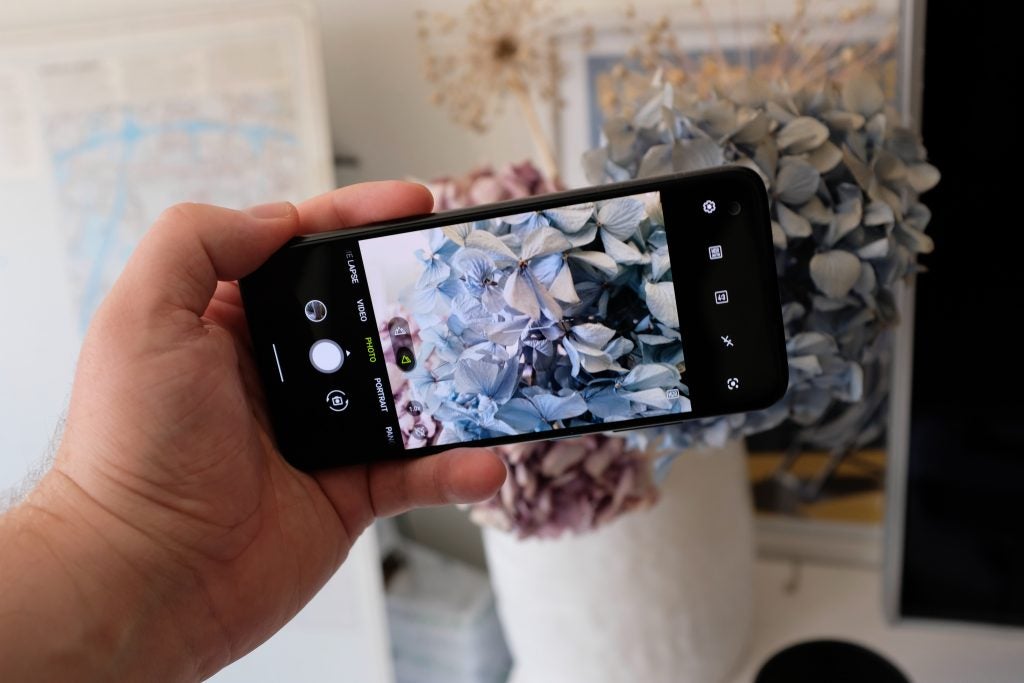
The main camera is a 64-megapixel Sony IM686 sensor with optical image stabilisation (OIS), an f/1.7 aperture and 8K video recording. This is paired with a 12-megapixel Sony IMX636 ultra-wide sensor.
I’ve been shooting with the camera for a few weeks now and it can churn out decent shots. The colours are punchy, there’s plenty of detail and the app focuses quickly. However, there isn’t anything of note that stands out, with the camera processing often being a weak point for Asus. Sometimes colours in particularly bright scenarios are oversaturated and look a little garish – even though they looked fine as the shot was being taken.
It’s also not the most capable camera in lower-light situations. There’s a dedicated night mode that combines multiple exposures together to pull out more brightness from a shot and this is fine for landscapes, but it falls down when there’s too much movement.

The camera here isn’t miles away from the Pixel 5 in regular lighting, however if camera quality is a key feature and you want a smaller phone, then Google’s offering might still be a better choice.
The secondary camera takes good ultra-wide shots and it’s nice for some added versatility, although there’s a noticeable colour shift between the camera sensors.


The lack of any sort of zoom – aside from the digital option – is a shame but hardly a surprise. The similarly-sized iPhone 12 lacks telephoto zoom and you won’t find it on the Pixel 5 either.

Performance
- Seriously powerful for the size
- Snapdragon 888, up to 16GB RAM
- 5G support
The most surprising aspect about the Zenfone 8 is just how many top-end specs Asus has crammed inside its tiny frame.
It is usual for smaller phones to skimp on the internals, offering mid-range chipsets – but this isn’t the case here. Powering the phone is a Snapdragon 888 platform with 5G and up to 16GB LPDDR5 RAM. While there’s no expandable storage, the 256GB UFS 3.1 storage should be sufficient for most. It even has excellent sounding, front-firing stereo speakers that sound better than many pricier phones.
I’ve been using the phone for a number of weeks now and it’s seriously fast in all situations, whether that’s gaming or just day-to-day business. As with any device that’s powered by this chipset, any game from Google Play runs with ease. I have noticed that the phone can run hot when playing particularly demanding games, something I haven’t seen too often with Android phones.
A few quick benchmarks back this real world use, with Geekbench 5 scores of 1119 (single-core) and 3689 (multi-core) comparing well to other high-end phones.
It’s been a few years since I’ve properly used an Asus phone over an extended period and I can’t say I was too enthused about the software back then. It’s a different story now, with the UI here packing many of the design elements typically referred to as ‘stock Android’. It’s clean, with an emphasis on Google’s own apps and services but with an added layer of depth that you just don’t see on the brand’s Pixel phones.
You have deep control of the display, performance and there are even customisations on offer for the button on the side. It’s a similar story for the battery, too. There are options to limit charging to a certain percentage to eke out more life from the cell.
Asus has said the Zenfone 8 will receive a further two years of Android updates along with the accompanying security patches. Two years of updates are, of course, better than one (or none, which is fairly common) but it falls below the three offered on flagship phones from the likes of Samsung.
Battery life
- Good battery life, but far from the best
- 30w charging
- Charger included
The Zenfone includes a 4000mAh battery with 30W fast charging (and an included power brick). Wireless charging is missing, though.
4000mAh might seem small when compared to some of the other best phones around, however with the smaller display, it can still hold its own.
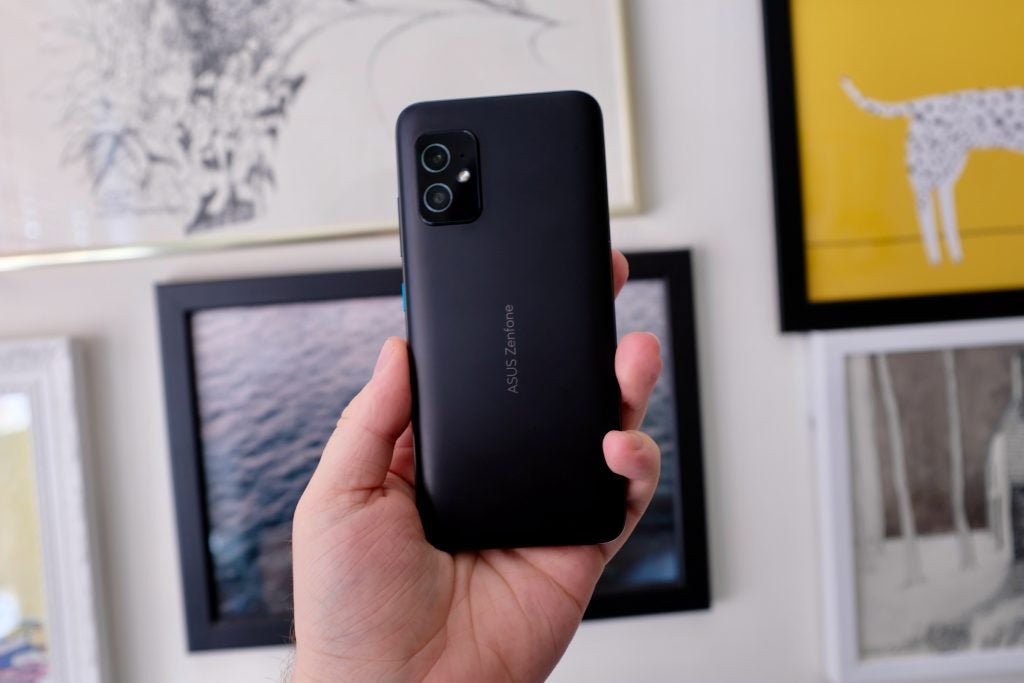
During testing, I have found that the Zenfone 8 gets me comfortably through a day with between five to six hours of screen time. I’d class this as quite heavy use, so if you’re a lighter user then you shouldn’t struggle at all to go from morning until night without reaching for a cable.
This is less than what you’ll find with larger phones, where screen-on time can often hit eight hours, however it is better than an iPhone 12, and far superior to the 12 Mini. The Zenfone 8 is far from a battery life champion but it’s still more than capable.
Asus has integrated a number of neat battery modes too. You can lower performance to get a little more juice or only allow the battery to charge to a certain percentage to hopefully give it more life. I haven’t spent enough time with the phone to judge whether these make any worthwhile difference but the options are always nice to have.
In terms of charging, there’s a 30w plug included that got me a full charge in 61 minutes. A quicker charge to 50% was completed in around 25 minutes.
Best Offers
Should you buy it?
If you find most Android phones too big, but aren’t willing to sacrifice performance, this is the phone for you.
While the battery life is fine, you do get longer endurance with larger Android phones with bigger cells. The lack of any decent zoom skills on the camera is a shame too.
Verdict
Asus has found a niche for the Zenfone 8 and I absolutely love it. If you’re after a smaller Android phone with top-tier specs that doesn’t break the bank then this device should tick all the boxes. It’s got a great screen, speaker and performance and is very smartly designed.
FAQs
You can get the Zenfone 8 with up to 16GB RAM
The Asus Zenfone 8 has an IP68 rating
Yes, all versions have 5G

